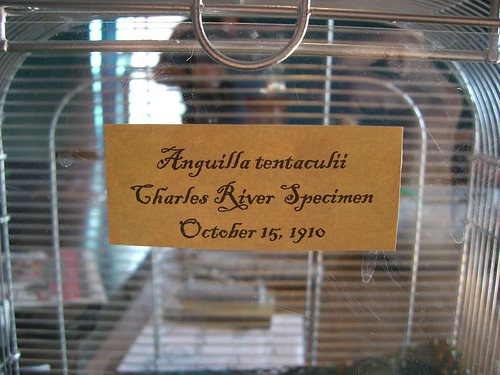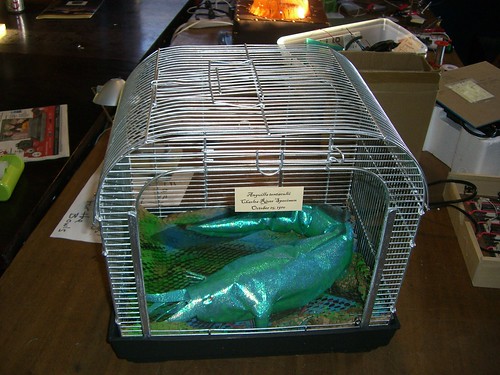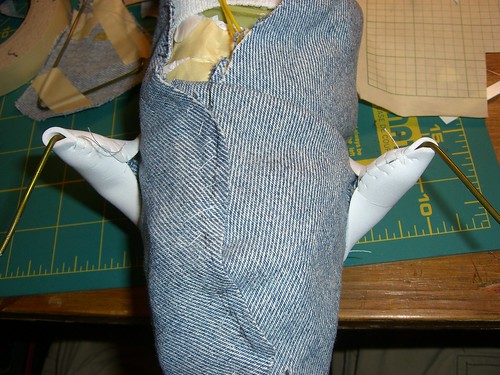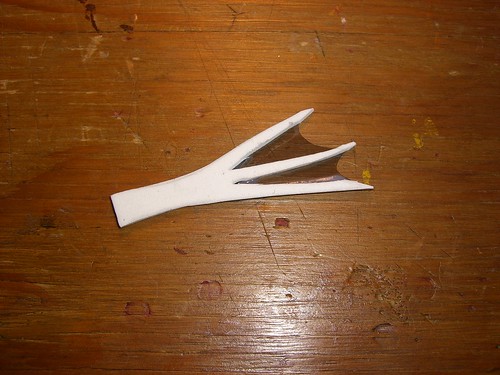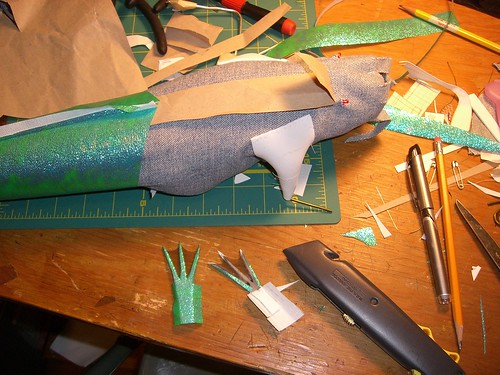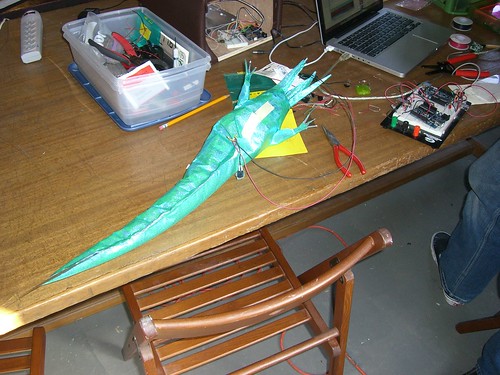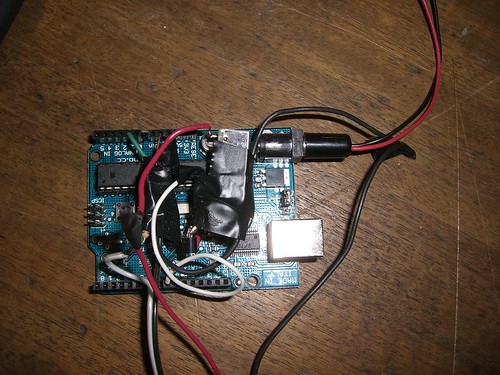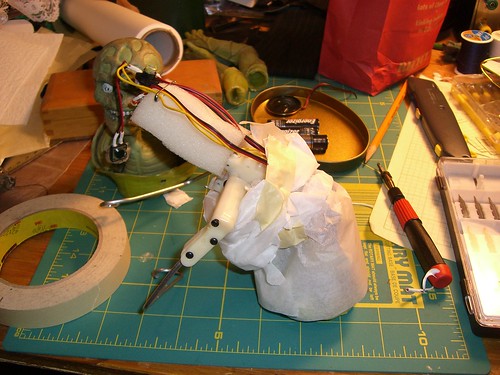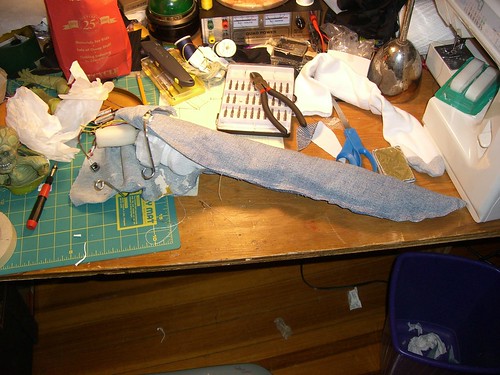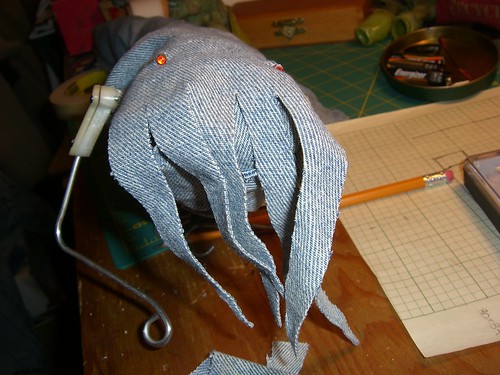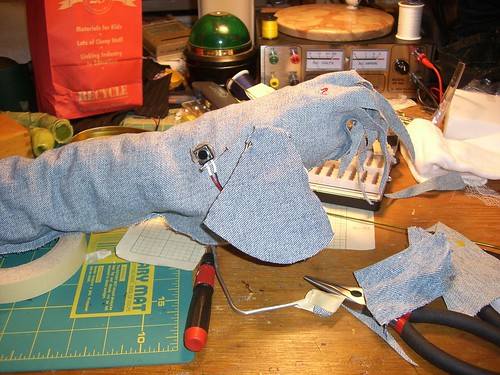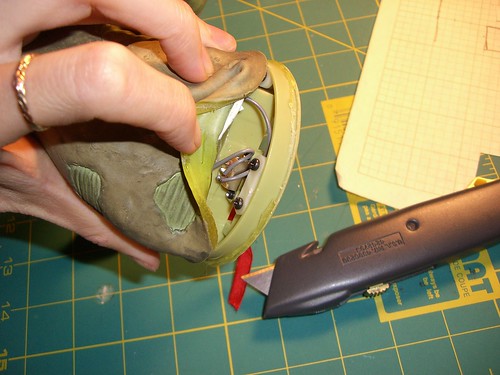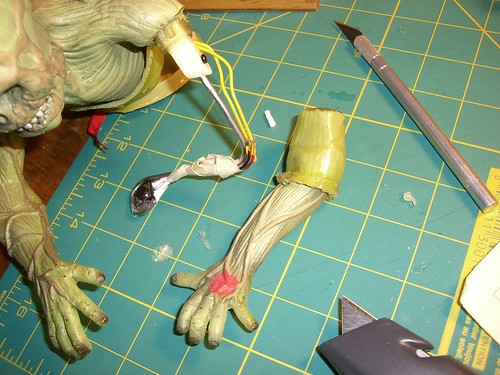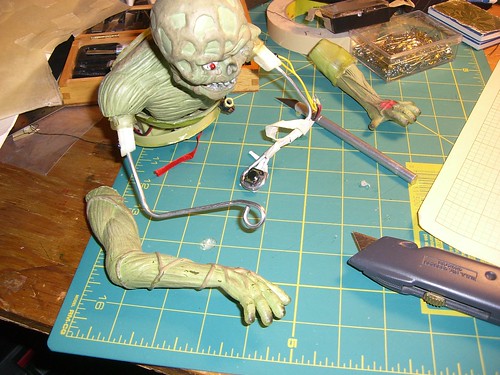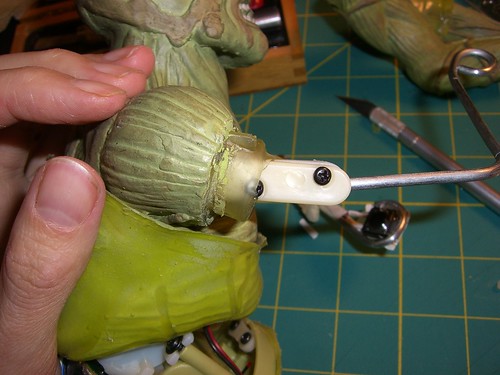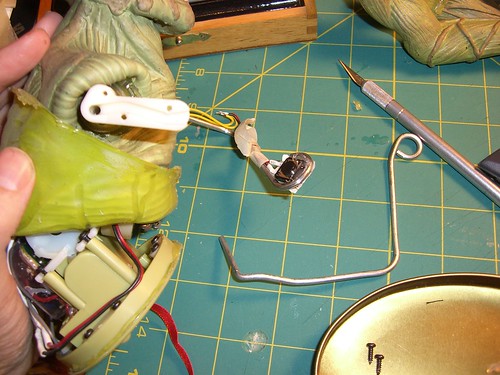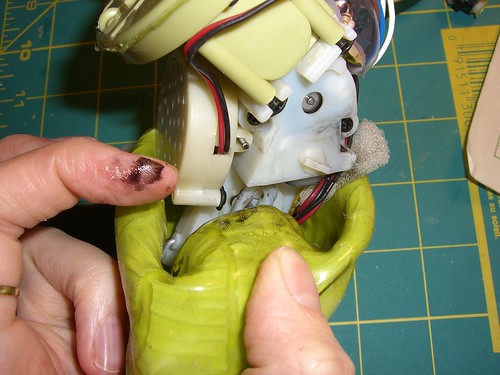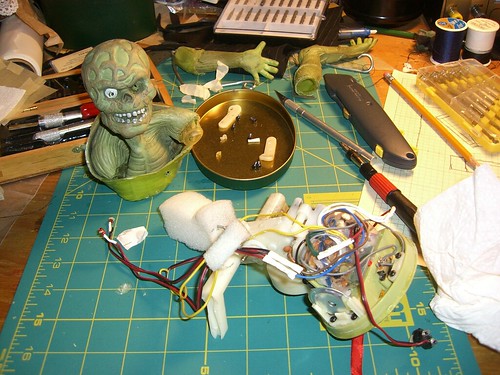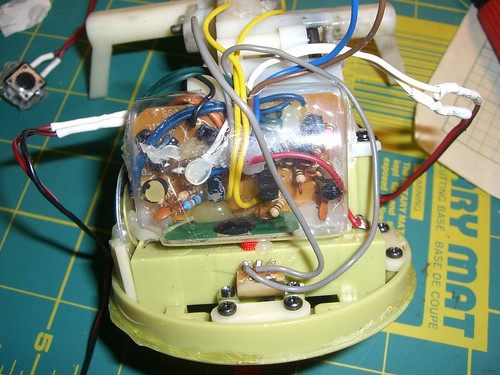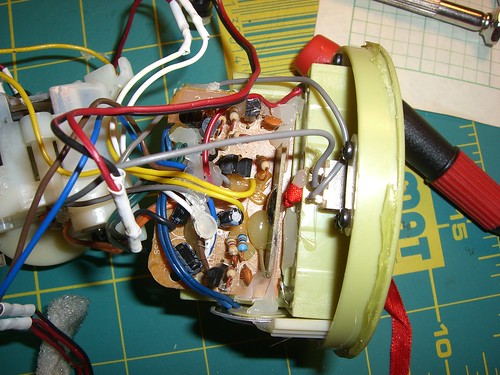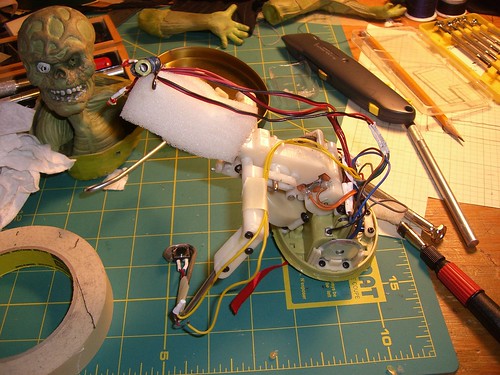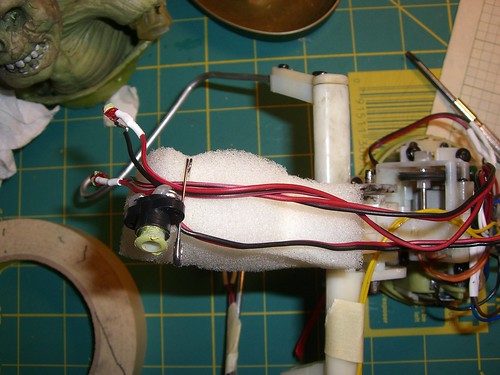Right. So. Way back in October, I finished the squid-eel known as Pork Chop.
I used a pretty green pearlescent paper to cover the finished body, with some strips of thin, transparent, dark grey PVC used as a fin along the top and tail. The enclosure was a cheap bird (or small animal) cage I found at Goodwill, painted with silver and black paint. I slapped a label on the front to complete the look – I printed the text with an old-timey looking script, and used a marker to give the paper an aged look.
Pork Chop worked just fine – up until the first night of the Halloween show, at which point his eyes stopped lighting up. I still haven’t debugged that, because in order to actually get at the interior, I’ll have to remove (destructively) the paper exterior and then make a new one. Bad planning/design. Would be much better to have an exterior that could be removed non-destructively, but it turned out that the easiest way to quickly attach the paper to the denim underlayer was glue. Lots of glue. And since I didn’t design/build the denim underlayer to be easy to remove, well, I have a problem. (Not much of a problem; I have plenty of the paper left, and can buy more.)
But moving on to the construction:
Leg in progress. I wrapped pieces of thin white foam (“Foamies” from Pearl Art) around the existing plastic structure, and stitched it to the denim underlayer, and to itself on the back side of the leg.
One little flipper foot. Thin white foam and PVC used for the webbing.
Beginning to cover Pork Chop with his pretty scaly paper skin. In the foreground are the flipper feet, with the foam covered with paper – the paper that isn’t yet wrapped around the flipper will be used to attach it to the wire and to the foam making up the upper leg.
The finished beast. The fin along Pork Chop’s back and tail is made from a thin PVC sheet. The original switch from the zombie is still sticking out under his belly – this will be wired in to an Arduino to set up the IR switch that will be used in the show.
I think I liked the floppy denim tentacles better than this rigid paper ones. Still, he managed to charm a couple barristas at the local coffee shop when I went in there, squid-eel tucked under my arm, to get some coffee to tide me over dealing with the serious electronics bit of business.
To line the cage, I took some packaging paper and spray-painted it with UV-reactive paint. Poor Pork Chop didn’t fit very comfortably inside.
I had help with the electronics, because I know nothing whatsoever about programming Arduino things. See, we had this neat little handheld lights that had a UV tube and a regular LED. The LEDs were replaced with IR LEDs, and each exhibit in the show was set up with an IR-detecting LED. Waving the UV light over the exhibit was supposed to reveal the location of the IR-detecting LED; shining the IR light on the IR detector would turn on the exhibit.
Pork Chop had three ways to be activated: the pressure-activated switch from the zombie’s hand, a light/motion sensor, and a sound sensor. Since I had already deactivated (or hidden) the latter two, the pressure switch was hooked up to an Arduino that was programmed and wired up to handle the IR-detection. We left the pressure switch intact for testing purposes and because, when the show was over, the Arduino was returned to its rightful owner.
The brains of the operation.
There was only a tiny bit of programming needed, to tell the switch how long to wait before resetting. Also we had to tweak the threshold at which the IR detector would pick up additional IR – the setting for the actual show was a much dimmer place than the sunny room the electronics were built in.
So, that was the squid-eel.
It was a lot of fun – I wish I’d bought several more crawling zombies, so I could have made an entire menagerie of weird twitching creatures! Maybe next October . . .

